
SS United States: Why her preservation matters
America’s flagship, SS United States, is currently fighting for survival in court proceedings after her dock rent doubled in August 2021. Beyond ongoing debates on finance, there are numerous reasons why preserving this historic liner matters …
Berthed in Philadelphia, SS United States currently awaits the outcome of court proceedings that will determine whether she will be able to continue residing there. This, in turn, will determine whether a potential restoration – or alternative use – may be possible for this historic ship. If the case does not go in her favour, she could be scrapped or sent to the seabed as an artificial reef.
While decisions are contested in court, SS United States stands as one of the last classic ocean liners in the world. She is a poignant reminder of the glory days of the transatlantic passenger service, and a symbol of human achievement.
There are many reasons why the preservation of the SS United States is important, both within her homeland of America but also elsewhere too. She is a record-holder and a survivor of a time that passengers around the world can remember and dearly wish to celebrate.
Jordan Morris, of the SS United States Conservancy, spoke with great fondness for the ship while serving as chairman of the Southeast chapter. His words echo what many a maritime enthusiast may feel towards a ship from days gone by: “SS United States has loomed from the water since 1952. It has seen the hope and glory of its namesake country and also its sadness in defeat.
"She is still with us – steadfast and determined – a symbol of America at her peak. It is as if this ship is living out a purpose beyond her natural capacity. To stand when it should fall, to endure when it should crumble, to trust when it should give up. May we continue to seek to strive to be like this old ship.”
SS United States remains the true holder of the Blue Riband
Upon her maiden voyage in 1952, crossing eastbound from America to Britain, SS United States pulled off a remarkable feat – she snatched the Blue Riband from Cunard’s powerhouse of the Queen Mary by a margin of over 10 hours, and then wouldn’t let go.
Like salt in the wound, SS United States then pulled the same trick on her return. She was the fastest ocean liner to cross the Atlantic and in both directions. She’d gone so fast that she’d stripped some of the paint from her own hull; not a statement you'd find in the sales brochures.
The Blue Riband was an unofficial award given to a ship with the fastest crossing of the Atlantic. While unofficial, the prize was coveted by shipping lines for speed and efficiency was one of the main advantages they could offer to transatlantic passengers.
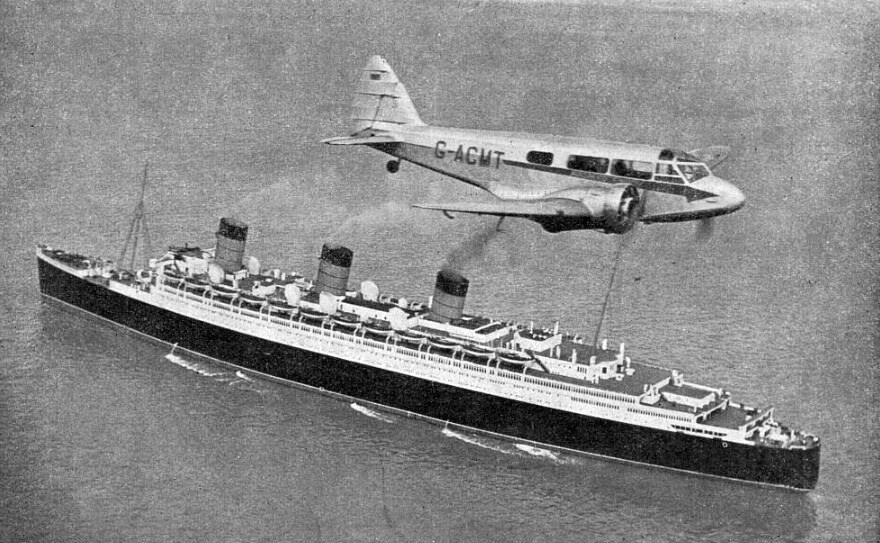
Holding the Blue Riband, even only momentarily, was a tremendous boost to any shipping line. It also made for prime marketing material on advertising posters and ship timetables.
For passengers and crew alike, pushing for the Blue Riband also made things more exciting – who wouldn’t want to be aboard a ship that was racing all other ships like it in the world, while doing something as dreary as travelling to a business meeting? Cunard's RMS Queen Mary had hogged the title for a very long time.
Naturally, there were some stipulations to be followed relating to the famed prize. The Blue Riband would only be awarded to a ship carrying passengers on the successful attempt, while the ship had to be intended to deliver a regular scheduled passenger service on the very same route.
Helpfully, most captains simply couldn’t resist opening the taps to see what their ship could do. The temptation for speed records upon the sea continues today despite the days of the Blue Riband being long gone.
Understandably, many vessels still find it valuable to claim how fast they can go. One such example is the cross channel Hoverspeed Seacat – known as ‘Hoverspeed Great Britain’ – which crossed from the UK to France in 1990, aiming for the Hales Trophy.
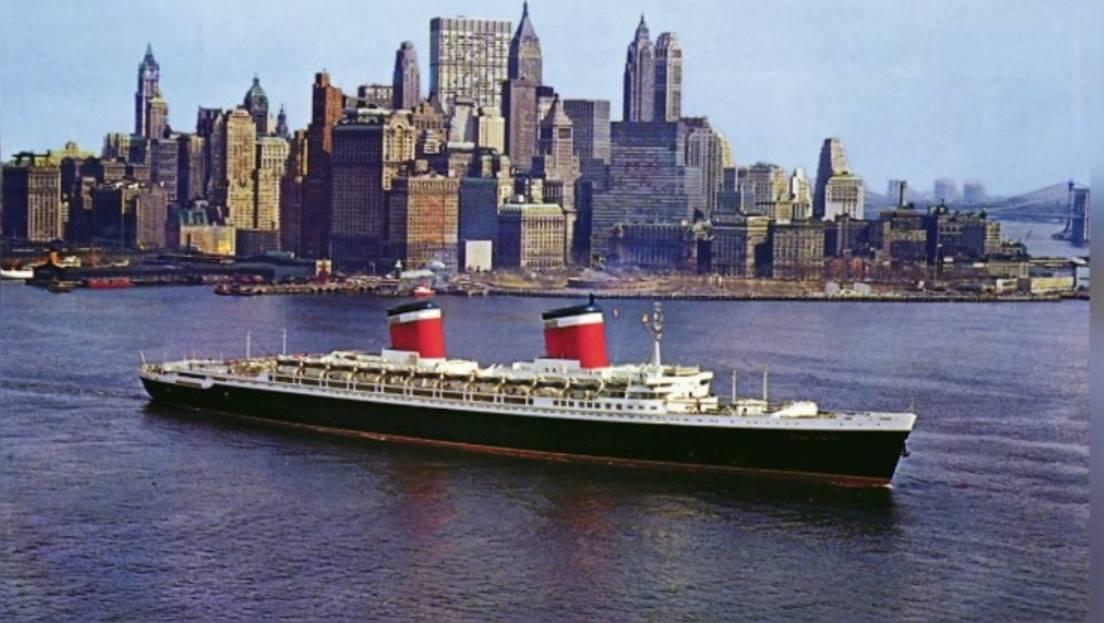
The vessel’s parent company – Hoverspeed – later claimed the craft had gained the equivalent of the Blue Riband. However, the Seacat was considerably smaller than an ocean liner, was not undertaking transatlantic service. Not only that, she was not carrying passengers during its dash across the English Channel – so doubts exist.
Enthusiasts of maritime history periodically hear similar claims. Most agree that SS United States remains the true holder of the Blue Riband. Not only did this ship wow with her speed on that initial return crossing in 1952, during her active seagoing years SS United States was never challenged once for her prize.
Throughout her North Atlantic crossings, she achieved an average speed of 35mph. She remains undefeated over 70 years later. Interestingly, debates on the top speed of SS United States rage on.
Rumours are abound that, despite her impressive performance which gained the Blue Riband with such notable advantage, she likely still had more to give. At the time, she was the largest ocean liner constructed within America – so, how could such a vast vessel be so incredibly quick?
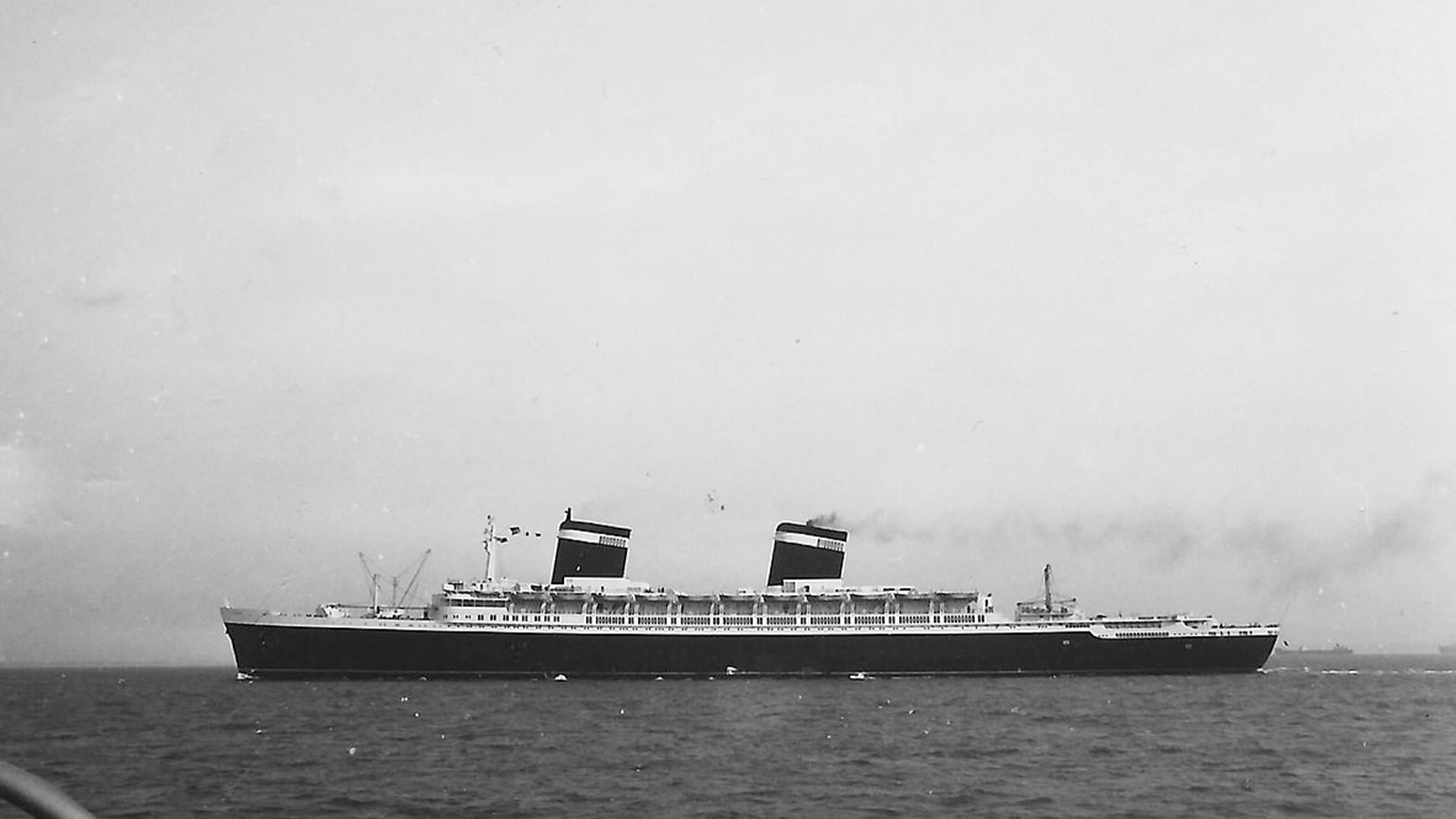
Granted SS United States possessed sleek lines, her funnels were angled back for minimal drag and a considerable proportion of her superstructure was made from lightweight material. A similar design is applied to sports cars and fighter jets.
SS United States also carried the most powerful steam turbines of any merchant vessel of her time and she had a capacity of 242,000 horsepower. Do the maths add up? Well, sort of until you hear that SS United States had actually encountered fog on her maiden voyage, which had inevitably slowed her down.
This means that she hadn’t actually given all that she could during the attempt; that would simply have been reckless. There were even faster crossing speeds to be had, but why? Was that necessary simply for passenger transport often promoted as leisurely?
Many years after her blistering maiden run, her top speed in sea trials in June 1952 was revealed as 38.32 knots, equivalent to 44mph (70.97 km/h). These details had been previously shielded as a military secret and, in turn, this reveals another reason why the future of SS United States matters.

SS United States was designed as an exemplary military ship
A casual glance at SS United States, both when new or as she sits now, does not necessarily reveal one of her true purposes nor where the majority of her funding came from. There is more to this ship than what meets the eye.
Her outward appearance is that of a stylish and patriotic ocean liner. SS United States still carries the streamlined profile that helped her achieve breathtaking speed while crossing the Atlantic. She is a slick and impressive means of travel.
But look again. A considerable proportion of the upper decks are made from lightweight aluminium while radar equipment – a somewhat rare feature when the ship debuted in 1952 – sits atop the mast. She is surprisingly efficient, considered down to the last detail.
SS United States is more than just a good-looking ship. Her construction was primarily funded by the US Navy.
After World War II, America sensed an increasing threat from the Soviet Union. While feeling twitchy about what the Soviets would do next, the US Navy contributed – to the hefty tune of over 50 million dollars – to the building of SS United States. A further $28 million came from United States Lines.
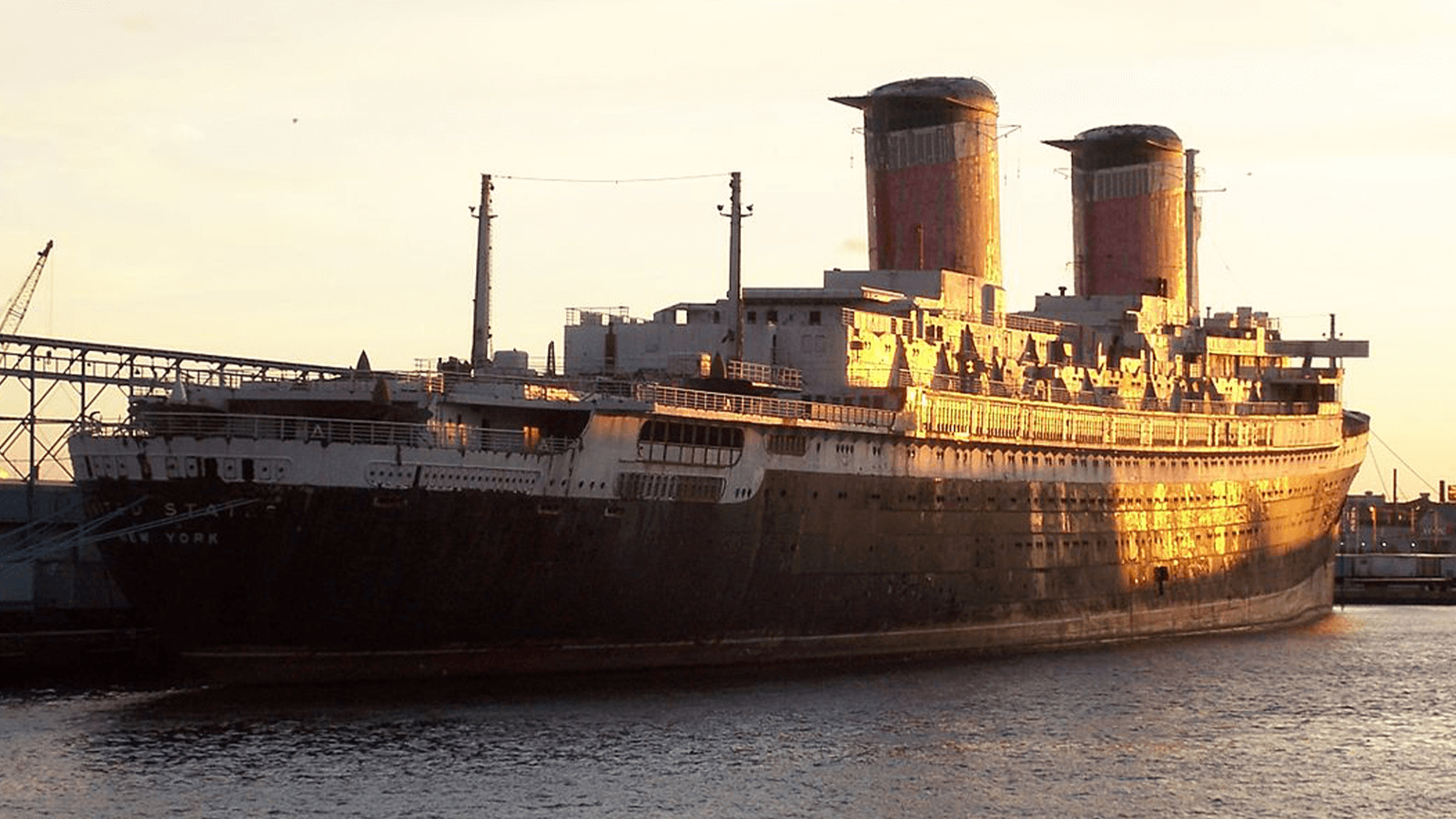
Much like her investments, SS United States had a dual purpose – she would function as an impressive ocean liner during peacetime while possessing the capacity to operate as a classified troopship if war happened to break out.
Built within a dry dock and to strict Navy standards, the glamourous SS United States could also be quickly converted into either a hospital ship or military transporter with the capacity for over 15,000 troops. Beneath her eye-catching lines lay heavy compartmentalisation and a back-up engine room should the other be rendered inoperable.
The delicate political situation with the USSR had opened a window of opportunity that was readily received by the designer of SS United States, William Francis Gibbs. Gibbs was granted a generous government subsidy to transform his plans for a super-liner into reality.
What resulted could either grant speedy travel for those simply in pursuit of new horizons or an exemplary military vessel that no-one would be able to catch. Funnily enough, they kept quiet about that on the advertising posters.

Embodiment of the innovation of William Francis Gibbs
To state that the SS United States is a labour of love feels like an understatement. The liner was the favourite ship of William Francis Gibbs, who not only came up with the concept of this super-liner but also designed her and spent almost half of his life pondering and refining his impressive creation.
Prior to becoming a renowned marine engineer and naval architect, Gibbs had begun on a somewhat more conventional path. At Harvard College, Gibbs studied law while indulging, perhaps rather too enthusiastically, in science and engineering back in his dormitory room. Plans of British battleships lay scattered amongst his textbooks.
Leaving degree-less from Harvard, Gibbs proceeded onto Columbia Law School to gain a Bachelor of Law and Master of Arts in Economics. While increasingly distracted by the marine and the technical, Gibbs’ father insisted he practice law.
Youthful concoctions of a super-liner competed with the day-to-day reality of pursuing a stable career. The work of an attorney filled Gibbs’ working day while observing the largest and fastest ships occupied his downtime.
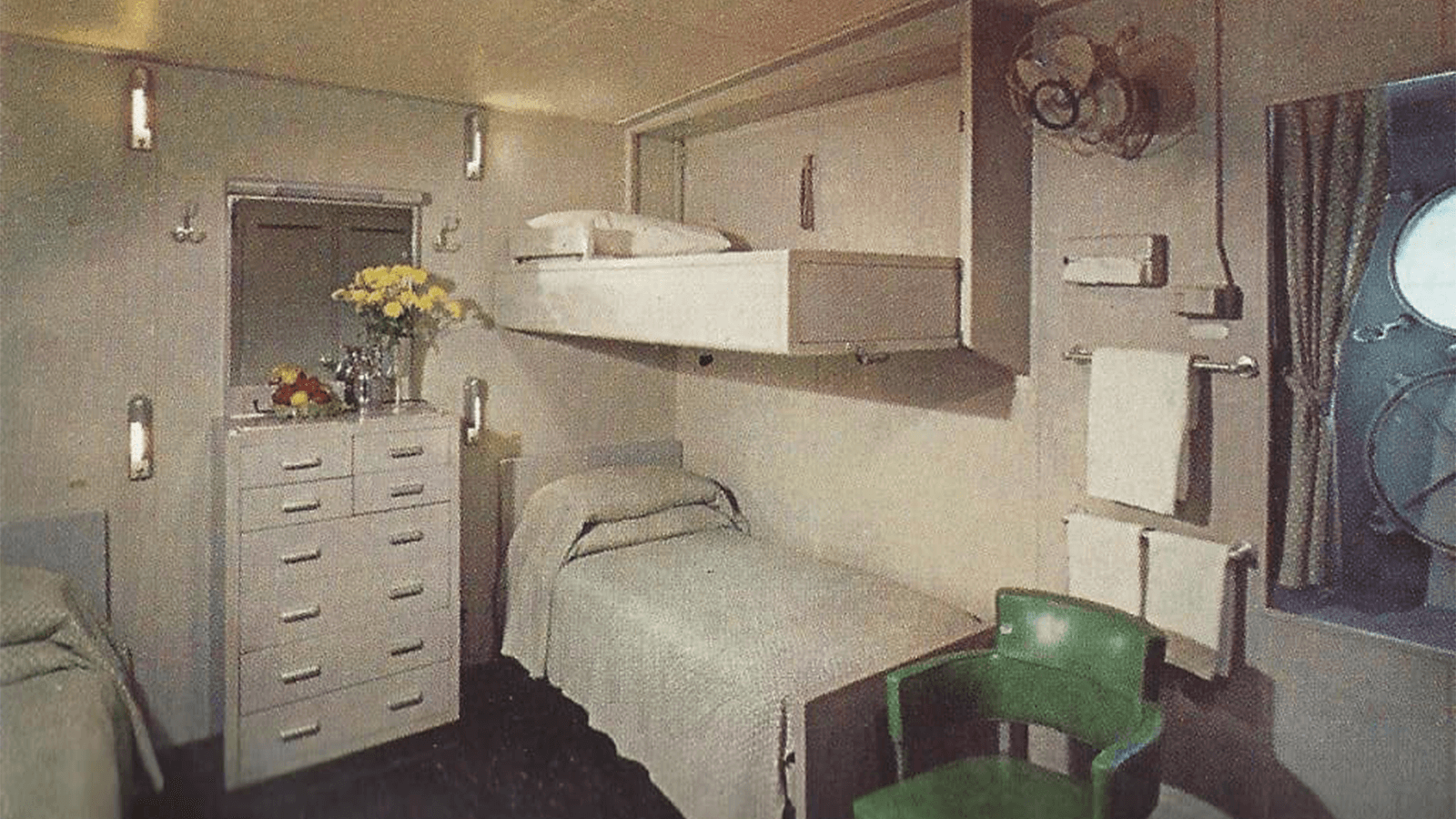
While few believed that Gibbs would succeed on this alternative path, sheer determination resulted in the handing in of notice and Gibbs leaving law behind in 1916, as he bravely waved caution to the wind.
Six years later, a small naval architecture firm founded by Gibbs and his brother Frederic – Gibbs Brothers, Inc – set out to convert the former German liner Vaterland into an American luxury liner – renamed SS Leviathan. Afterwards, the design of several small liners kept business turning, all the while building the firm a reputation for speed, safety and innovative design.
In 1929, the Gibbs brothers partnered with yacht designer Daniel Cox. The company rebranded as Gibbs & Cox and yielded many more vessels, most notable of which was the SS America.
Just over a decade later, as World War II unfolded, Gibbs & Cox compiled plans for thousands of American warships including destroyers, minesweepers, cruisers and more.
In this crisis, if you were American and in need of a ship that could pack an almighty punch, chances are it would herald from Gibbs & Cox. They were responsible for no less than 74 per cent of all American naval vessels, which were largely responsible for protecting America during those troubled times.
Both peacetime and a new commission then landed. On behalf of the US Navy, Gibbs & Cox were appointed to design and supervise the construction of SS United States. It was the project that would culminate everything Gibbs had studied and dreamed of.

Five years of passion and innovation would yield something oh-so-special upon the drawing board, and what resulted was a light, fast, safe and enduring craft.
The ship’s revolutionary design took shape courtesy of an aluminium superstructure and a welded hull, while the overall weight remained surprisingly low. Carrying two engines, with an estimated overall horsepower of 242,000, SS United States was lightning fast too. If war did break out, she would prove an evasive entity.
On SS United States, William Francis Gibb said: “You can’t set her on fire, you can’t sink her and you can’t catch her.”
In the meantime, she was all set to wow the crowds. She was an incredibly special ship, set on a path to greatness thanks to the enthusiasm and sheer bloody-mindedness of her designer.
Over seven decades later, SS United States proudly continues to embody the innovation of William Francis Gibbs.
The safest ocean liner in history
When considering the many different ways that SS United States has been made safe, it is as if every lesson from maritime history has been incorporated into her very being. SS United States is the safest ocean liner in history and for many a good reason.
William Francis Gibbs was a staunch advocate for safety, in particular when it came to hull integrity and fire prevention. Bar the onboard Steinway grand pianos and the butcher’s blocks within the kitchen, no wood was used in the ship’s decoration or interior surfaces.
At the National Bureau of Standards test facility, a mock-up cabin was set alight. The ‘passenger effects’ quickly collapsed into piles of ash but the cabin fittings held up. Even the curtains refused to smoulder!
Continued fireproofing reached out to the exterior. Controversially, the deck of SS United States was coated in fireproof Neotex rather than a more traditional teak finish while the handrails were made of aluminium in place of a wooden finish.
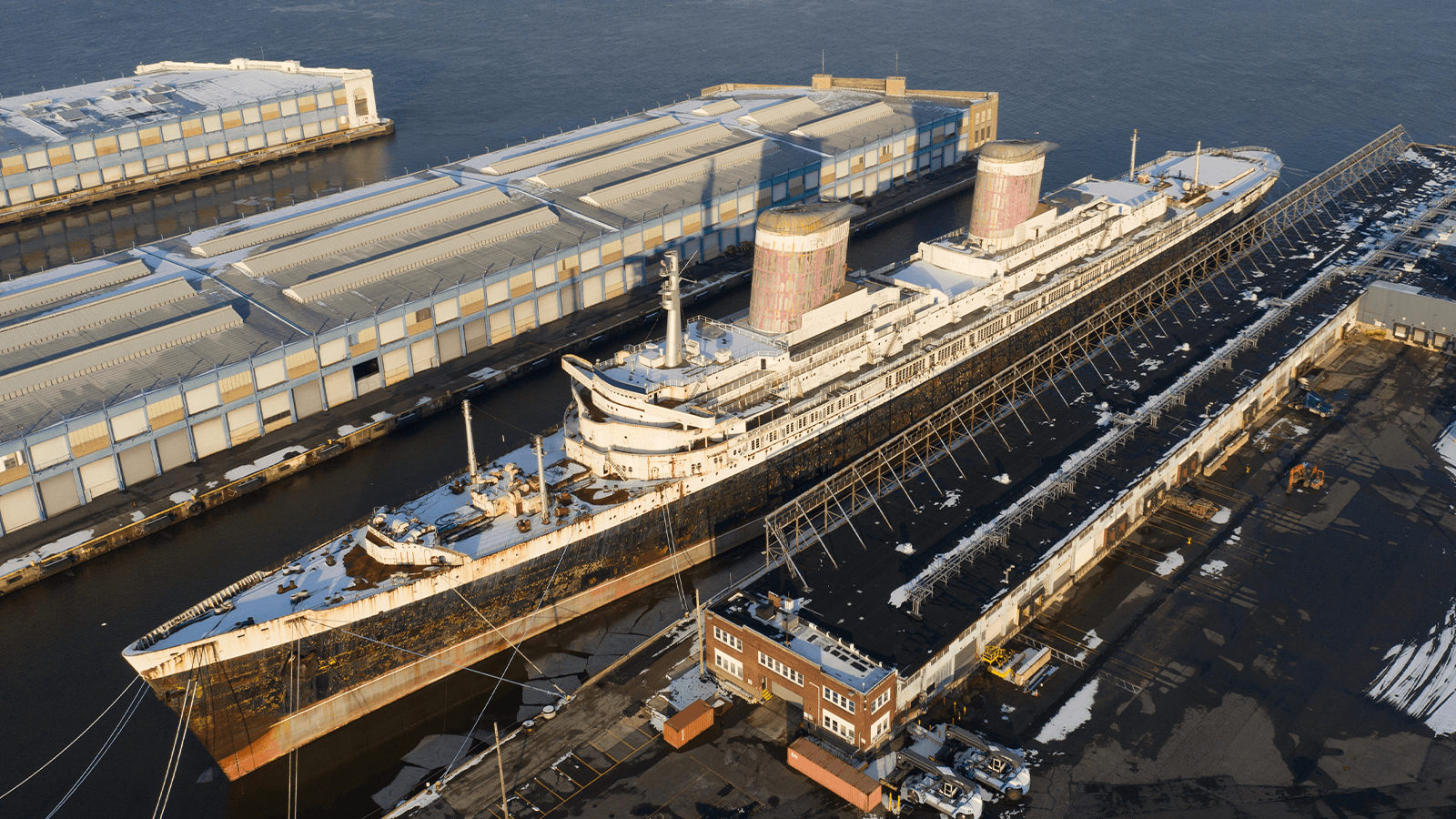
This may have seemed like overkill, but Gibbs was painfully aware of the outcome of the 1934 SS Morro Castle disaster in which 137 passengers and crew had been lost in a fire that had originated from electrical issues and swiftly got out of hand. The veneered wooden surfaces and glued ply panelling had all fuelled the flames.
Gibbs had also learned from the loss of the SS Normandie which, while being hastily converted for military use in America, caught fire. In 1942, by pier 88 in New York’s harbour, crowds could only watch horrified as the largest and most luxurious liner of the time was engulfed. The likely cause was small sparks from a welder’s torch. How could so much be lost so easily?
Gibbs was keen not to see a repeat of past failings. It is this legacy that leaves the SS United States – having debuted in 1952 – surpassing modern-day passenger ships in fire prevention some 70 years after those measures were put in place.
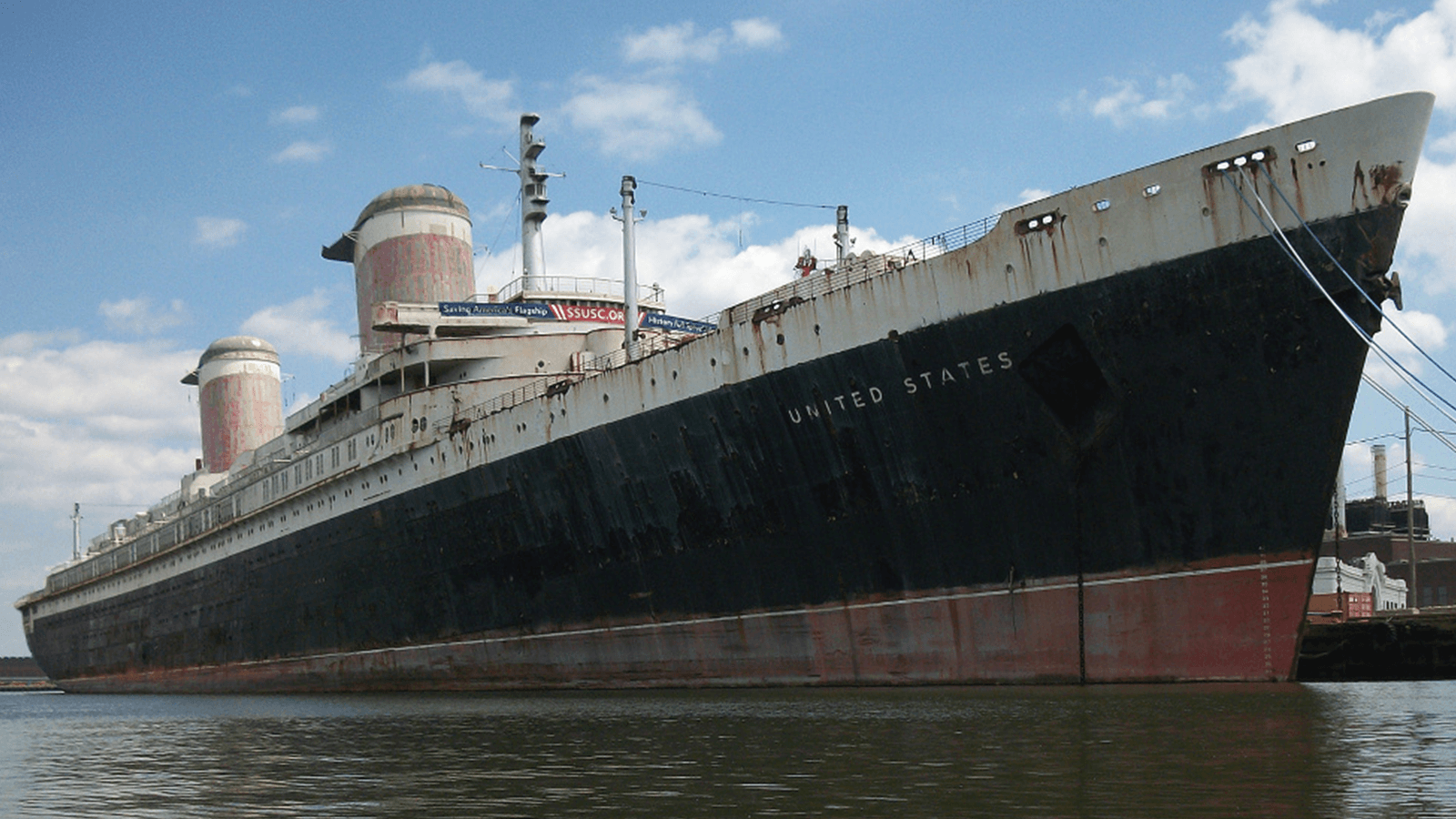
In addition, were the passengers of SS United States ever in need of disembarking in difficult circumstances, they were well-catered for thanks to twice as many lifeboats being in place as would have been needed on each side of the ship. Something that had been ignored by the infamous RMS Titanic.
This meant that even if SS United States developed a significant list, for whatever reason, everyone on board would be able to leave safely. This feels strongly reminiscent of the Lusitania disaster in which only six of 48 lifeboats were released due to the ship’s significant list; after a torpedo tragically hit in 1915.
The port-located lifeboats had become swung in and were unable to reach the water, leaving most of Lusitania’s passengers with nowhere to go. Gibbs would not have the same occur on board SS United States, doubling up on lifeboats to be sure.

A portfolio piece of modernist design
Not only would attempts to ignite the fixtures and furnishings of SS United States fail, you would also fail to see outdated design while walking around the swish interiors of SS United States.
Inside this 1950s ship was a visual marvel with bright hues of red, white, blue, green and gold. The colour palette had been carefully selected to minimise seasickness while every material was fireproof and every detail was highly sophisticated.
Throughout 23 public rooms, 395 staterooms and 14 first-class suites, SS United States had a fresh and contemporary aesthetic. The interior of SS United States harnessed the optimistic post-war dawn that led into the 1950s space race while simultaneously complementing the ship’s streamlined and patriotic exterior perfectly.
What would later comprise a portfolio piece of modernist design was successfully concocted by the female duo of Dorothy Marckwald and Anne Urquhart. These pioneering women had worked previously on the interior of SS America – the sister ship of SS United States – also designed also by Gibbs.
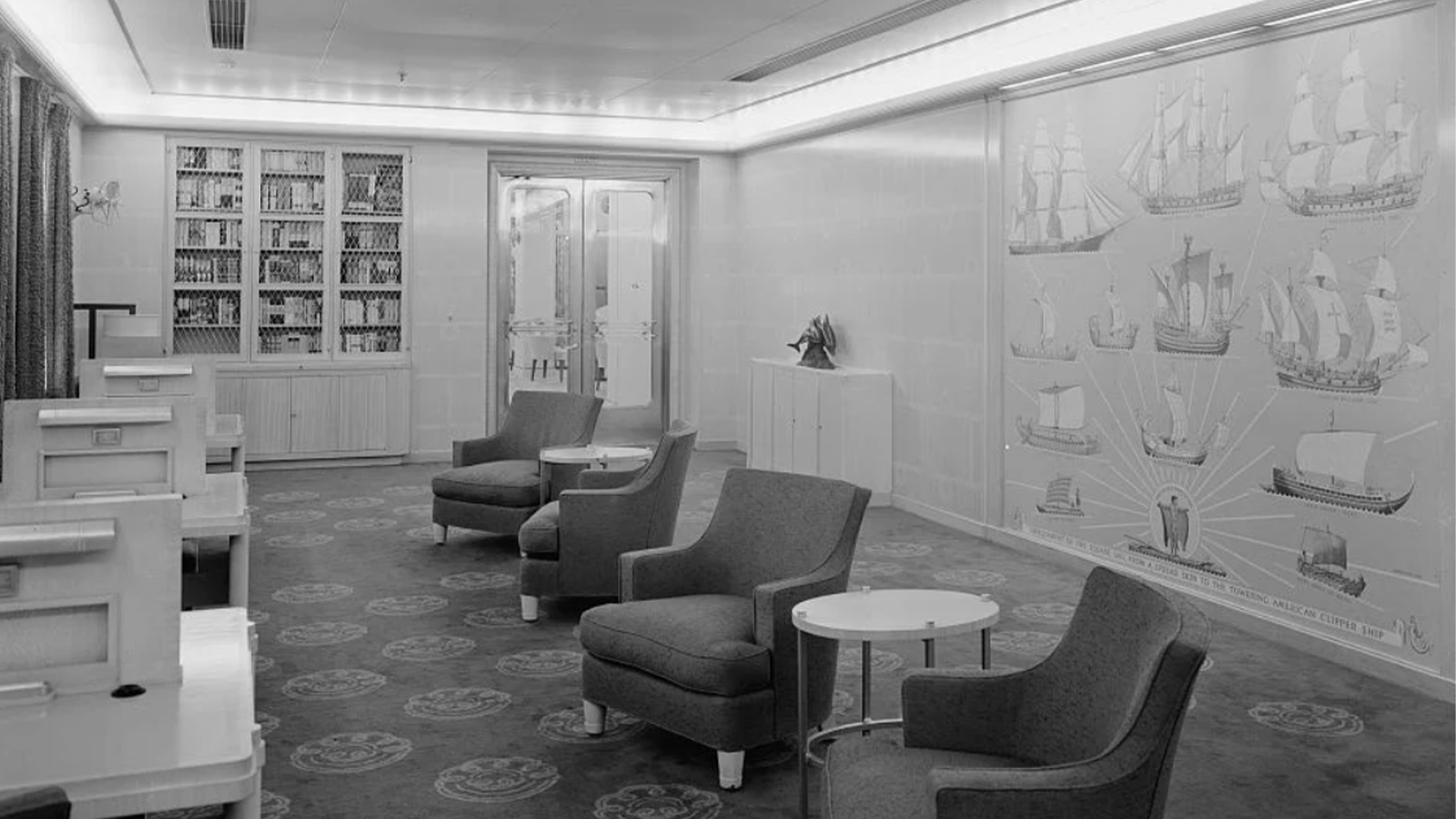
In the 1950s, it was a somewhat unusual prospect for women to design ship interiors but Marckwald and Urquhart had chosen this as their speciality and truly made it their own.
Not only had the pair greatly exceeded expectations with SS America, they’d also added to their repertoire with four further interior commissions on behalf of the Grace Line.
The strict safety requirements for SS United States could have posed a tricky brief to other designers of liner interiors. However, of Marckwald and Urquhart’s previous projects, SS America was an excellent test base for fitting her larger fleet-mate.
When built in 1940, SS America had been able to proudly claim of being 90 per cent fireproof. This was thanks to the use of several flame-resistant materials, all new at the time, including aluminium, fiberglass, Dynel and Marinite.
Just over a decade later, the team’s previous experimentations with these resources upon SS America provided a strong foundation for the fitting out of SS United States who, in turn, would be an impressive 100 per cent fireproof.
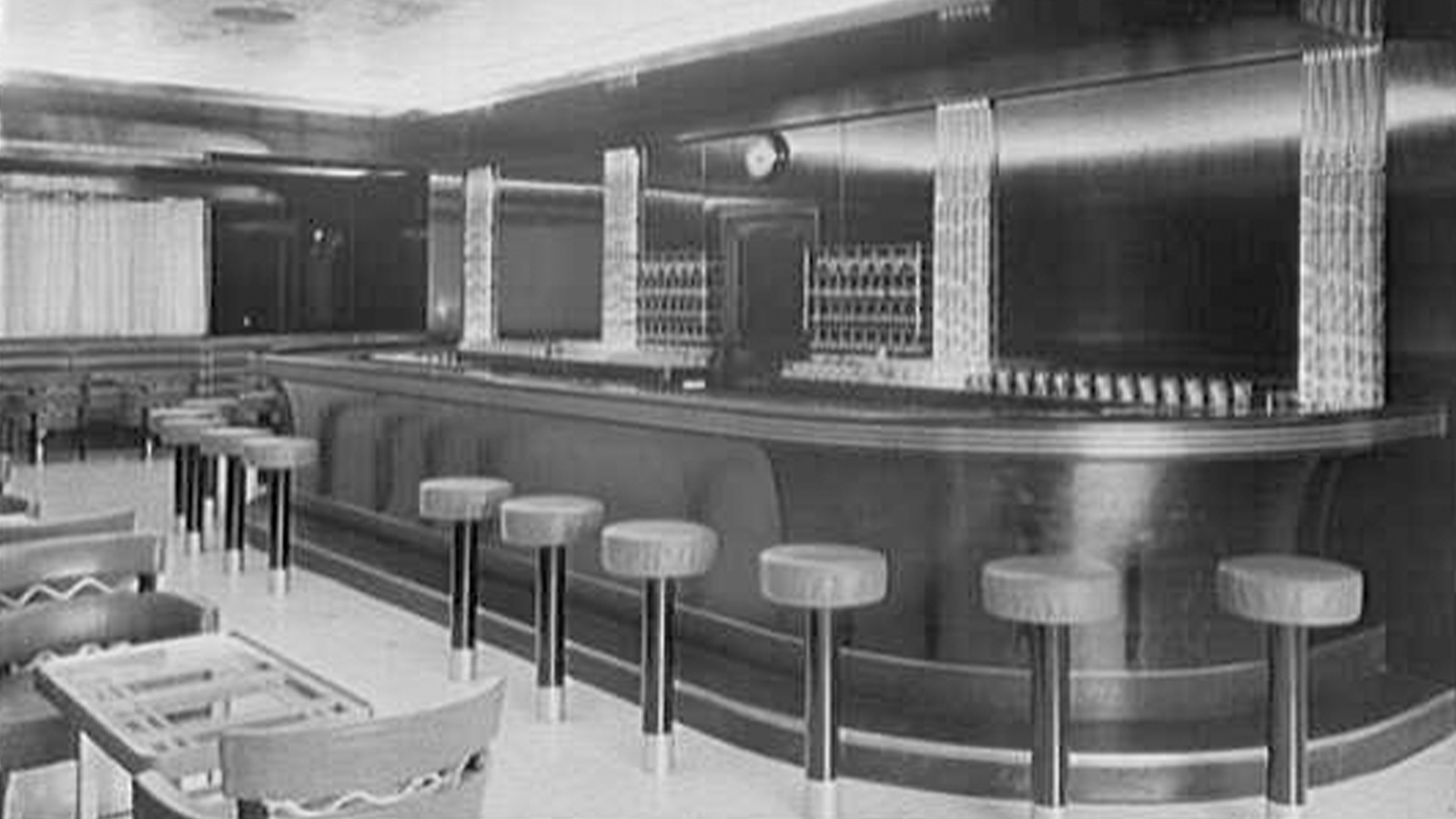
Artwork throughout SS United States was generally made from either glass or other spun fibres with every piece emphasising America.
Over 800 companies from every state in America had contributed to the ship while many US artists produced themed works across numerous styles such as Art Deco, Streamline Moderne and American Modernism.
Sculptures that represented the four freedoms decorated the first-class dining lounge while murals of ocean currents and constellations bedazzled in the Observation Lounge.
Elsewhere, curved walls, with decorative murals bending in accordance, complimented rounded public spaces and ceiling fixtures. The overall feel was one of flow and comfort. All was easy on the eye while being strikingly modern yet tasteful.
Regrettably, many pieces of furniture from SS United States were auctioned off in 1984 before asbestos removal was undertaken in the early nineties, extracting the majority of the fittings from her glory days.

These incidences mean that very little of the enchanting spaces aboard SS United States remain intact today. However, some artefacts reside in the Mariner’s Museum in Virginia as well as the National Museum of American History in Washington. Meanwhile, archive images still document what a handsome ship SS United States was.
Her stunning good looks and notable pride in everything American ensured that SS United States a hugely popular ship when she was new while she continues to be a portfolio piece in ship design now.
A film star and favourite among famous passengers
Thanks to her stellar reputation of being fast, fashionable and the floating epitome of Americana, SS United States attracted numerous famous passengers as well as a notable film career for herself.
Appearing in no fewer than six films, the SS United States has enjoyed more movie reel time than most other ships in the world.
Kicking off in 1954 with Sabrina, a comedy romance starring future cruise ship godmother Audrey Hepburn and Humphrey Bogart, SS United States has also starred in Gentlemen Marry Brunettes (1955), West Side Story (1961), Bon Voyage! (1962), and Munster, Go Home! (1966) as well as 2013’s Dead Man Down. One cannot deny that’s quite an impressible filmography for a vessel.
Meanwhile, the lengthy list of the great and the good on board SS United States during her speedy transatlantic crossings would have been sure to take other lines to the heights of jealousy.
Clientele of the SS United States included John F. Kennedy, Marilyn Monroe, Judy Garland, Walt Disney, Salvador Dali, Carey Grant, Rita Hayworth, Duke Ellington, Bob Hope, Former president Harry Truman and his daughter Margaret, Princess Grace of Monaco and the Duke and Duchess of Windsor.
As a young man, former US president Bill Clinton travelled on board SS United States in 1968 and he has remained a supporter of the ship since. Speaking in 2010 on efforts to conserve her, Bill Clinton said: “SS United States is … a symbol of our country’s industry and accomplishment … the destruction of the United States would be tantamount to destroying other national monuments like the Liberty Bell or the Statue of Liberty… we must maintain what is good and constant in our past if we are to imagine a better future.”

SS United States was America’s flagship
Thanks to the enthusiastic reception of SS United States within her home country, she quickly became known as America’s flagship.
If, in the 1950s, you’d been looking for efficient transatlantic passage from America, the SS United States was your quickest and most patriotic option. If those slanted red, blue and white funnels did anything well, it was broadcast ‘Here comes America’ wherever she went.
Additionally, SS United States was the largest liner constructed entirely within the US. She housed components and decorative items from across the nation, and was formed thanks to the effort of an American workforce over 3,000 strong.
In her active years, she was the proud holder of the coveted Blue Riband from her maiden voyage, while also serving as the seagoing ambassador for all things Americana. She impressed even her most vocal critics with her speed and technological advancements, before then sealing the deal with comfortable interior and stylish mid-century design.
SS United States is America’s First Lady of the Seas and a source of national pride. To see her destroyed would be beyond heartbreaking.












